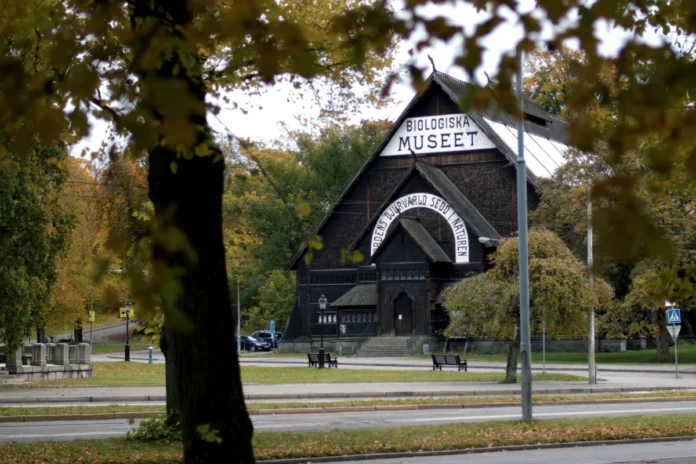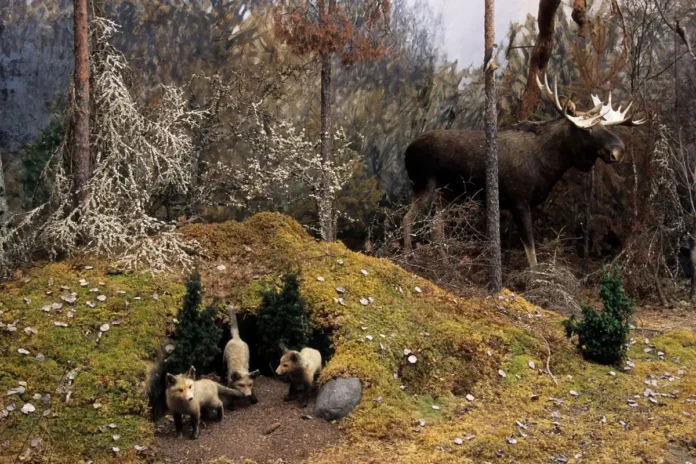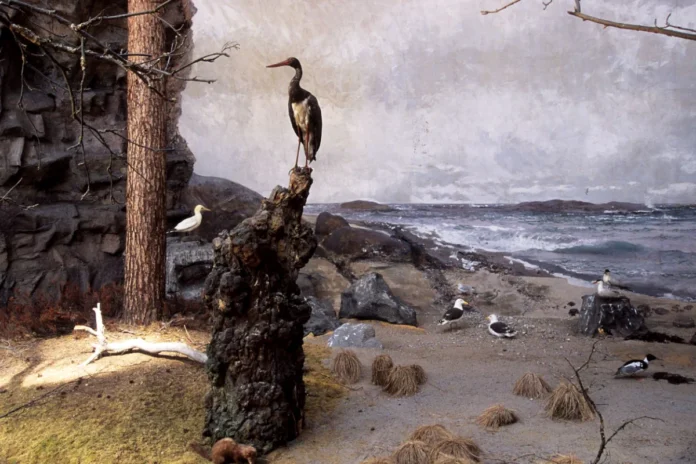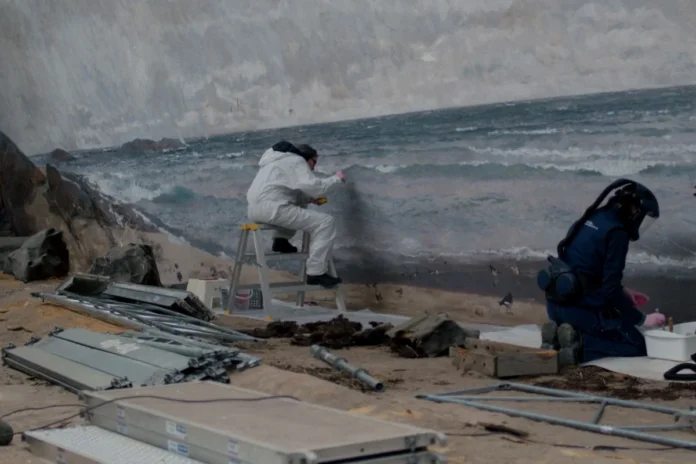The Biological Museum closed in 2017 due to renovation needs. Fortunately, an extensive renovation has now been initiated, and the museum is expected to reopen in a couple of years!
Nestled in the heart of Stockholm, the Biologiska Museet stands as a captivating tribute to the diversity of life on Earth. With its distinctive architecture and immersive exhibits, the museum offers visitors a unique opportunity to explore the wonders of the natural world and gain a deeper understanding of biodiversity.
Biologiska Museet: Architectural Splendor
Architect Agi Lindegren designed the building, featuring facades and outer roofs clad in tarred wooden shingles. It drew inspiration from Norwegian medieval stave churches. The portal’s exquisite relief wood carvings bear a resemblance to Borgund Stave Church. The structure is classified as national romantic and was inaugurated in 1893, and the museum was one of the attractions at the Stockholm Exhibition in 1897. The original facade inscription read: “Unique in its kind – Panorama of Animal Life – Unparalleled in the world.” The exhibition hall lacks electric lighting. Instead, natural daylight streams through the large skylights, creating a sense of natural life.
Today, the facade bears the inscription: ‘Nordic animal world, seen in nature.’
The Biologiska Museet diorama
The museum features dioramas among its exhibits, showcasing lifelike depictions of various ecosystems and their inhabitants. Dioramas are three-dimensional, detailed displays that aim to recreate natural habitats and provide a realistic glimpse into the lives of different species.
Craftsmanship in Dioramas
In these dioramas, artists skillfully arrange taxidermy animals within meticulously crafted environments to simulate their natural behaviors and surroundings. Visitors can observe animals in settings that closely resemble their native habitats, offering a unique and immersive experience.
Educational Value of Dioramas
The use of dioramas at the Biologiska Museet enhances the educational aspect of the museum, allowing visitors to study and appreciate the diversity of wildlife in a way that closely resembles their natural environments. It’s a popular and effective method for conveying information about ecosystems, animal behaviors, and the interconnectedness of species within their respective habitats.
Extensive Exhibits Collection
When visitors step inside, they immediately find a wealth of exhibits that span the realms of zoology, botany, and paleontology. Furthermore, the museum’s displays showcase an extensive collection of taxidermy animals. This includes mammals, birds, and marine life. Consequently, guests can observe creatures from various ecosystems up close. Additionally, the meticulous craftsmanship of the taxidermy work adds a lifelike dimension to the exhibits. This offers a fascinating glimpse into the world’s fauna. Moreover, the intricate details and vibrant colors make it both educational and aesthetically captivating.
Conclusion
The Biologiska Museet in Stockholm is a testament to the enduring fascination with the natural world. Whether you are drawn to the enchanting architecture and diorama, the diverse array of exhibits, or the educational opportunities, the museum offers an enriching and visually stunning experience. It serves as a reminder of the intricate beauty and interconnectedness of life, inviting visitors to embark on a journey of discovery within its walls.






